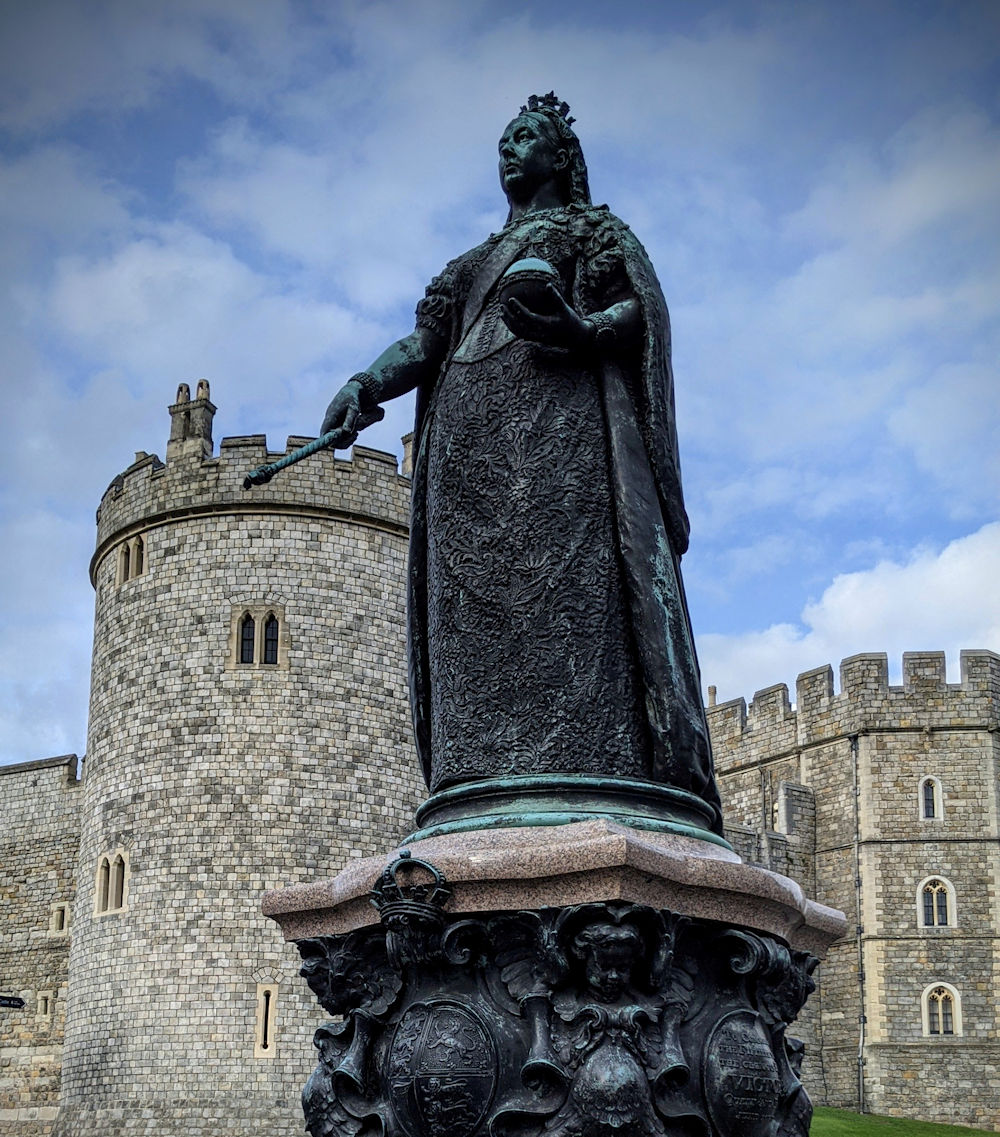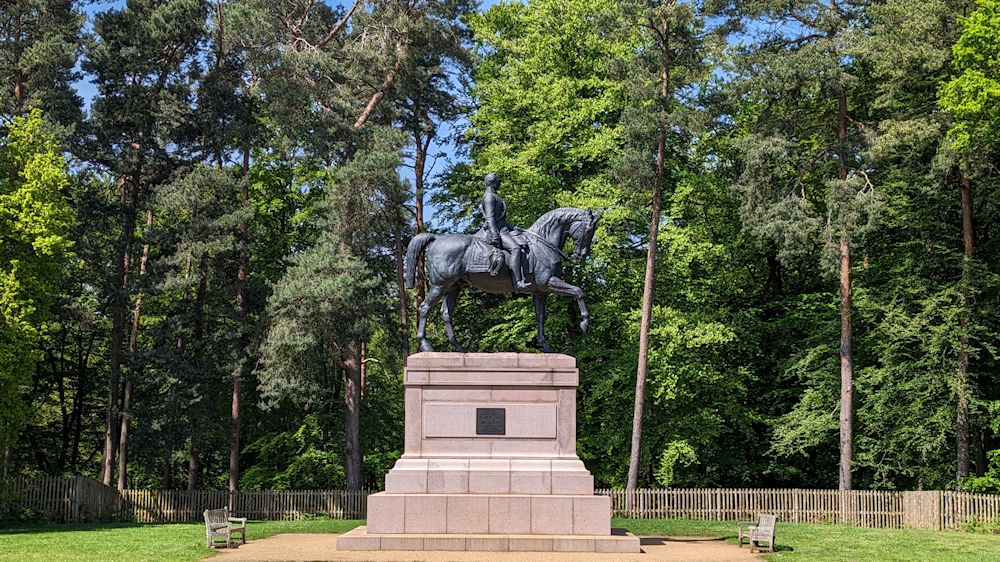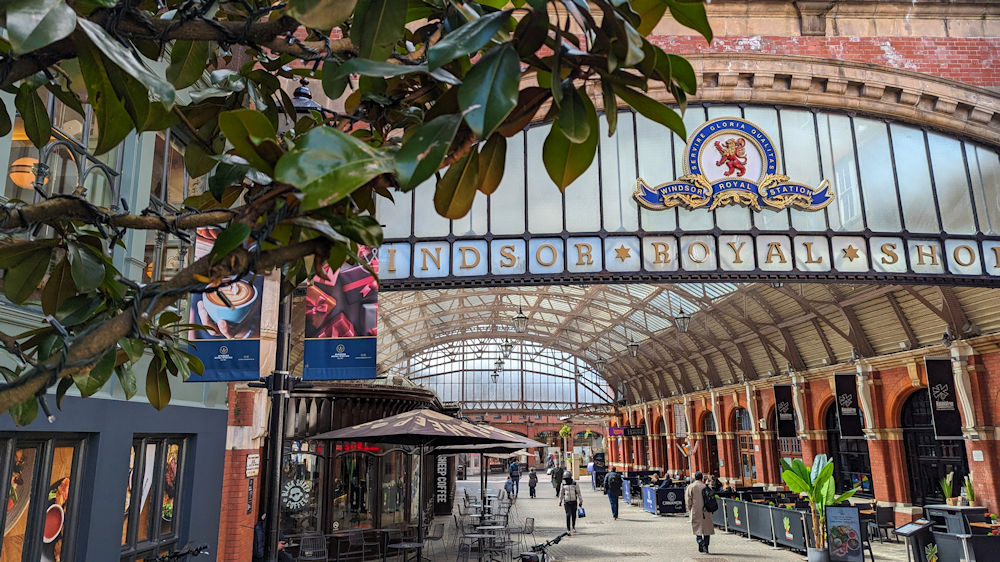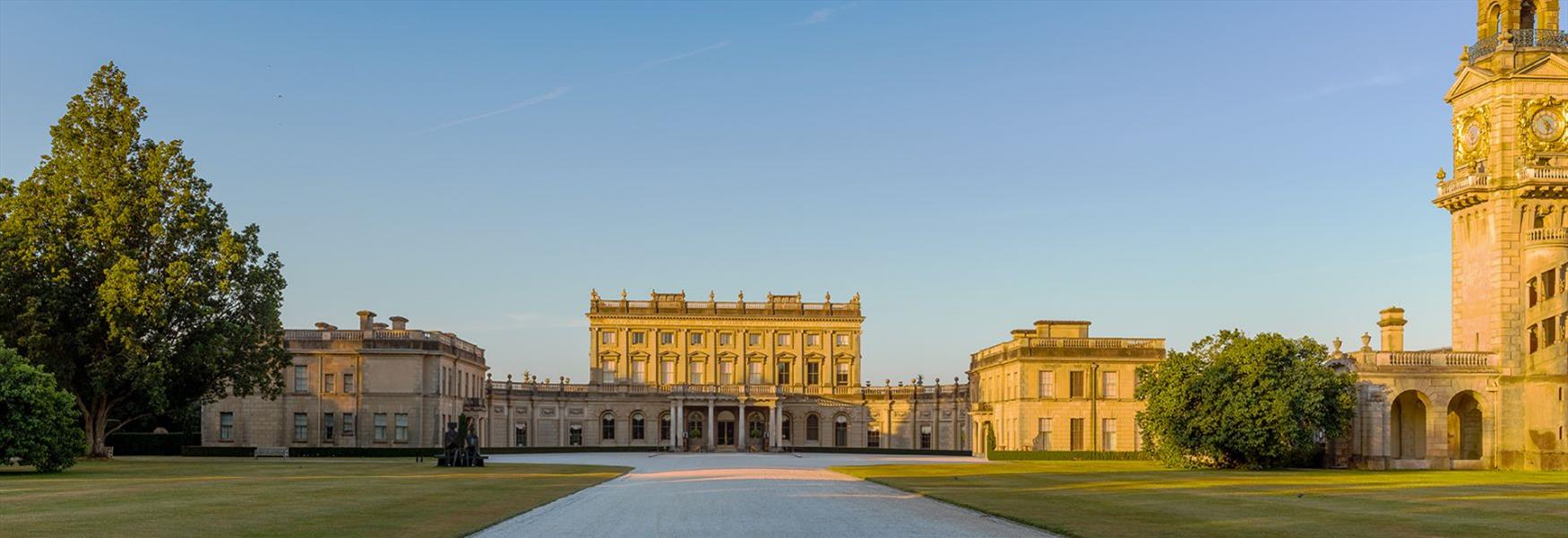To provide you with the best experience, cookies are used on this site. Find out more here.

To provide you with the best experience, cookies are used on this site. Find out more here.

To build your own Itinerary, click  to add an item to your Itinerary basket.
to add an item to your Itinerary basket.
Already saved an Itinerary?


You are here: Home > Ideas & Inspiration > Royal Connections > Queen Victoria's Windsor
Windsor was a special place for both Queen Victoria and her Consort Prince Albert. A devoted couple, they spent much of their time here and many connections remain where it is possible to follow in their footsteps. Read on for more information on those places with a special 'Victoria and Albert' connection.
Windsor Castle, the world’s largest and oldest occupied castle, is open on set days throughout the year. As a working royal palace, it is used frequently by The Sovereign for State ceremonies and official entertaining, and closures can occasionally occur at short notice.
The presence of the monarch at Windsor Castle is signified by the Royal Standard flag flying majestically from the Round Tower. This is a tradition that continued from Victoria's time. Although Queen Victoria is long gone, this practice is a direct nod to her reign and the customs she helped establish.
The young Queen enjoyed playing games in the Castle's corridors. Her 20th birthday ball took place here in 1839, as did the second visit by her first cousin Prince Albert of Saxe-Coburg-Gotha. Five days later Queen Victoria proposed to him in the Blue Closet. On the evening of their engagement, Prince Albert appeared at dinner in the blue and red Windsor uniform. After their wedding on 10 February 1840, the newly-weds came to Windsor Castle for their honeymoon.
Queen Victoria gave birth to Prince Alfred, future Duke of Edinburgh and of Saxe-Coburg-Gotha, at Windsor Castle on 6 August 1844, the only one of her nine children not born at Buckingham Palace. Five of the Queen’s children were married at Windsor, four at St George’s Chapel and one in the Castle’s Private Chapel.
During her reign in 1845, Windsor Castle's State Apartments were first opened to the public. Queen Victoria had the beautiful glass chandeliers put in the Queen’s Ballroom. Windsor also became synonymous with the celebration of Christmas, with Prince Albert helping to make popular the German tradition of the tree which had been introduced into England by Queen Victoria’s grandmother Queen Charlotte.
Prince Albert died in The Blue Room at Windsor Castle in December 1861 when Victoria was 42 years old. The Queen, unable to disguise her grief, was dubbed The Widow of Windsor due to her dark mourning clothes. She had been intensely reliant on Albert’s support, practically and politically as well as emotionally. It was not until the 1870s that Queen Victoria was coaxed back into public life.

Queen Victoria Statue, image Nicola Bell @VisitWindsor
A gathering of Queen Victoria’s family for her Golden Jubilee in 1887 saw the unveiling of the statue, created by Sir Edgar Boehm, which still stands at the foot of Castle Hill as a testament to her enduring legacy in the town. Queen Victoria suffered from headaches and the statue shows her wearing a small coronet, much preferred to the heavy crowns of state.
After her death, a funeral service was celebrated in St George’s Chapel and her coffin carried on a gun carriage to the Royal Mausoleum at Frogmore.
Queen Victoria would go to Frogmore ‘to retire’. Both her mother and her husband are buried in the mausolea in the beautiful, peaceful gardens, where she too was laid to rest some forty years later. In an extract from her diary Queen Victoria wrote ‘The gardens at Frogmore do my poor shattered nerves a lot of good’.
Although Frogmore House is no longer open to the public, you can catch a glimpse of the mausoleum's roof as you walk along the Long Walk away from the Castle and look to your left through the trees.
Perhaps the Queen’s greatest legacy to Windsor Castle are her journals (141 volumes covering the years 1832 – 1901 and held in their own bookcase in the Royal Archives at Windsor) and the many artworks which she and Prince Albert helped to amass.

Prince Consort Statue in Windsor Great Park, image Nicola Bell @VisitWindsor
Queen Victoria loved Virginia Water from childhood and frequently enjoyed picnicking here. Prince Albert also had a significant impact on Windsor Great Park through his focus on improving the living conditions of Estate workers, building cottages and establishing the Royal School for Estate children. An equestrian statue commemorating Prince Albert’s contributions to Windsor Great Park can be seen near Smith’s Lawn (pictured above), placed there as the Jubilee Offering of the Women of England to Queen Victoria.
Once part of a vast Norman hunting forest, the 5,000-acre Windsor Great Park is free to visit and enjoy on a daily basis and is managed by the Crown Estate.
.jpg)
The East Window of St George's Chapel, image copyright the Dean & Canons of Windsor
Three key features in St George's Chapel in particular are connected with Queen Victoria.
St George's Chapel is open to visitors Monday to Saturday 10am-4pm and for services throughout the day (please check any provisional closures in advance). On Sundays the Chapel is closed to visitors though all are welcome to attend services. Entrance is included in a ticket to Windsor Castle.

Entrance to Windsor Royal, image Nicola Bell @VisitWindsor
Windsor & Eton Central station was completely rebuilt by Great Western Railway for Queen Victoria's Diamond Jubilee in 1897, with a grand frontage and an interior reminiscent of Paddington. There are significant signs and mentions of this to see, when enjoying shopping in the centre now; indeed the entrance to Windsor Royal Station is named ‘Jubilee Arch’. The Grade II listed building that now houses All Bar One was built for the exclusive use of the royal family, and this is where you will still find Queen Victoria's waiting room.
On 2 March 1882, an attempt on the life of Queen Victoria took place at Windsor’s Royal Station. The Queen had arrived back from London and was departing in her carriage.
In this video, produced with and for Windsor and Royal Borough Museum, Becky Tabrar tells the story of the attempted assassination of Queen Victoria by Roderick Maclean in 1882 and the ramifications this case had for the treatment of mentally ill people by the courts for decades to come. This attempt in 1882 was the last of eight attempts by separate people to kill or assault Victoria over a period of four decades.
On Queen Victoria’s accession to the throne in 1837, she appointed Harriet, Duchess of Sutherland (1806-68) as her ‘Mistress of the Robes’, a post she held until her husbands’ death in 1861. Harriet became one of Queen Victoria’s closest friends throughout these years and Victoria was a regular visitor at her home – Cliveden House – just a few miles away from Windsor Castle. This was a very familiar place to Queen Victoria; a sanctuary in times of difficulty and a place comfort and security, when friendly conversation over tea between good friends, offered much needed respite in troubled times. Many visits are documented in Queen Victoria’s diaries.
In May 1866, the Duchess of Sutherland lent Cliveden to the Queen for 10 days as the Queen wanted to be close to London during parliamentary battles over the second Reform Bill. Queen Victoria’s party consisted of ninety people, including eight policemen, two doctors, three dressers for the Queen and three for the princesses, and five footmen. The four children’s education was not forgotten as they were accompanied by two governesses. In addition, there were ten horses, twelve ponies and eight carriages. The Queen’s piper was in attendance, as was her servant and confidant John Brown. Queen Victoria stayed in the Duchess’s bedroom (today known as The Lady Astor Suite) and used the Library as her sitting room. Reports from the time show that each day the Queen went for walks and rode in her carriage, she sat on the Terrace, reading or sketching and there are wonderful descriptions of her time at Cliveden.
Even after Harriet’s death Queen Victoria continued to visit Cliveden, which by then had been sold to Earl Grosvenor, who had married Harriet’s much-loved daughter Constance. She was extremely disappointed when the house was finally sold in 1893. On learning of the news she wrote this to the Duke of Westminster: “The Duke must excuse the Queen if she says she thinks he has built too much at Eaton and that if that had not been so, Cliveden might have been retained. He will miss it very much the Queen is sure and the Duchess and the children even more so! We grieve to think that we shall probably never see it again. The Queen is, however, glad he thinks that any rate the beauties and quiet of the place will be preserved, but it is grievous to think of its falling into these hands!” This references William Waldorf Astor who took possession of Cliveden on 15 August 1893 and started a new chapter in the house's history.
Visitors can still embrace Cliveden House's link with Queen Victoria, from the portrait of Harriet, Duchess of Sutherland, that hangs in The Cliveden Dining Room, to staying in the bedroom that Queen Victoria used during her stay at the house, sitting on the terrace or staying overnight at Spring Cottage in the grounds, where Queen Victoria and the Countess would take tea on summer afternoons when she arrived by boat from Windsor Castle.
Currently home to the Household Cavalry, the original barracks were built in 1853 and enlarged in 1911. The old barracks were completely demolished in 1988 and new barracks were built, completed in 1993. The barracks remain the place from where troops set off to change the guard at Windsor Castle. The Changing the Guard at Windsor Castle takes place on Tuesdays, Thursdays and Saturdays from 11am (but do check the schedule in advance to avoid disappointment).
The personal passions and public causes of Prince Albert, husband of Queen Victoria, have been revealed, as more than 17,500 photographs, prints and private and official letters - the majority publically available for the first time - have been published online to mark the 200th anniversary of his birth.
The website ‘Prince Albert: His Life and Legacy’ (albert.rct.uk) sheds fresh light on Albert’s contribution as Queen Victoria’s unofficial Private Secretary, a guide and mentor to some of the greatest national projects of his day, university chancellor, art historian, collector, and patron of art, architecture and design. It gives new insight into Albert’s achievements before his premature death at Windsor Castle at the age of 42, his impact on Victorian society and his influence on our world today.
Want to receive Windsor tips, ideas and inspiration? Subscribe to our enewsletter!
Want to hear more? Sign UpX





